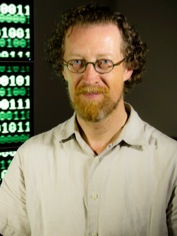
Introduction To High-Performance Scientific Computing
This book brings together in a unified manner topics that are indispensible for scientists engaging in largescale computations.
Tag(s): Parallel Computing
Publication date: 01 Feb 2010
ISBN-10: n/a
ISBN-13: n/a
Paperback: n/a
Views: 30,183
Type: N/A
Publisher: n/a
License: n/a
Post time: 07 Mar 2010 10:28:18
Introduction To High-Performance Scientific Computing
 This book brings together in a unified manner topics that are indispensible for scientists engaging in largescale computations.
This book brings together in a unified manner topics that are indispensible for scientists engaging in largescale computations.
Publication date: 01 Feb 2010
ISBN-10: n/a
ISBN-13: n/a
Paperback: n/a
Views: 30,183
Document Type: N/A
Publisher: n/a
License: n/a
Post time: 07 Mar 2010 10:28:18
Victor Eijkhout wrote:The field of parallel scientific computing lies at the crossroads of a number of disciplines and skill sets, and correspondingly, for someone to be successful at using parallel computing in science requires at least elementary knowledge of and skills in all these areas. Computations stem from an application context, so some acquaintance with physics and engineering sciences is desirable. Then, problems in these application areas are typically translated into linear algebraic, and sometimes combinatorial, problems, so a computational scientist needs knowledge of several aspects of numerical analysis and discrete mathematics. An efficient implementation of the practical formulations of the application problems requires some understanding of computer architecture, both on the CPU level and on the level of parallel computing. Finally, in addition to mastering all these sciences, a computational sciences needs some specific skills of software management.
The author of this book felt that, while good texts exist on applied physics, numerical linear algebra, computer architecture, parallel computing, performance optimization, no book brings together these strands in a unified manner. The need for a book such as the present was especially apparent at the Texas Advanced Computing Center: users of the facilities there often turn out to miss crucial parts of the background that would make them efficient computational scientists. This book, then, comprises those topics that the authors have found indispensible for scientists engaging in largescale computations.
The contents of this book is a combination of theoretical material and selfguided tutorials on various practical skills. The theory chapters have exercises that can be assigned in a classroom, however, their placement in the text is such that a reader not inclined to do exercises can simply take them as statement of fact. The tutorials should be done while sitting at a computer. Given the practice of scientific computing, they have a clear Unix bias.
Tweet
About The Author(s)
Victor Eijkhout is a research scientist at the Texas Advanced Computing Center.

Victor Eijkhout is a research scientist at the Texas Advanced Computing Center.
Robert A. van de Geijn is Professor in the Department of Computer Sciences and Texas Institute for Computational Engineering and Sciences (ICES) at The University of Texas at Austin. His areas interest are formal derivation of algorithms, mechanical generation of libraries, numerical analysis, parallel supercomputing, scientific computing, high-performance linear algebra libraries.

Robert A. van de Geijn is Professor in the Department of Computer Sciences and Texas Institute for Computational Engineering and Sciences (ICES) at The University of Texas at Austin. His areas interest are formal derivation of algorithms, mechanical generation of libraries, numerical analysis, parallel supercomputing, scientific computing, high-performance linear algebra libraries.